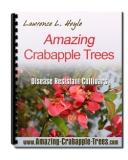Building a Compost Bin
Compost can act as a great fertilizer, enriching the soil with organic materials rather than making use of chemicals that can do more harm than good if used improperly. Composting is a great way to save money as well. Using compost requires that you thoroughly mix it into the soil, reducing compaction and providing oxygenation to the soil. Compost can help plants stay healthier, and that contributes to their ability to repel diseases and survive insect attacks. A healthy landscape can be achieved with a little help from composting.
It is important to note that composting does require a little extra work. The pile needs to be turned, and you need to make sure that you have adequate break down of the items in your compost pile. You need to be discriminating in what you put in your compost: it should only be items that will break down naturally. Plant matter (including pulled weeds) and some foods are excellent in compost and will add to the health of your soil, and thus to your landscape over all. There is no reason, however, that your compost pile needs to be a true pile. A bin can help you better contain your compost and keep it from being spread across your yard in a smelly mess by animals or a really fierce storm.
The first thing you need to do before you build a compost bin is decide what your needs are. Many people actually use a three-bin system. The bins may be connected, or they may be individually lined up. Some people use the bins for different types of compost (regular compost, slow compost like woody plants, and leaves collected in the fall). Others like to have a three-bin system for the turning purposes. Move the compost from one bin into the next, allowing it to turn. Then you can start a pile in the newly vacated bin. By the time the compost makes it into the third bin, it is ready for use. Others find that a single bin is sufficient for their needs, and just go out to stir it around occasionally.
Next you need to determine what materials you will use to build your bin. It is important to note that some exposure to the elements is necessary for more effective and quicker composting. Chicken wire is not particularly good for compost bins as it can stretch out of shape very easily and does not wear well. Materials like 16-guage plastic-coated wire mesh and hardware cloth are better choices, as is hog wire. Wood makes an interesting choice, but it is important to note that it will eventually compost itself and will need to be replaced. Do not used pressure-treated wood, as it has toxic levels of copper and chromium, and there is evidence that arsenic can leach into your compost. Other materials that are acceptable for building compost bins are spoiled hay bales, old cinder blocks or bricks, wooden pallets, snow fencing, and a discarded rabbit hutch. The hutch is desirable because there is very little that needs to be done to make it ready.
One of the easiest and cheapest ways to build a compost bin is to construct it from wooden pallets. Most warehouses, grocery, and hardware stores are more than happy to give these away for free, or for very cheap, as it saves them the trouble of having to discard them. You can use plastic ties to hold four of them together in a box formation. Adding another bin to create a system is easy: just attach three more pallets using one side of the already made bin to complete another box. Be warned: after about two years you will need a new bin, as this bin will be composting itself.
A cinder block or brick bin is also rather easy and cheap to build. If you visit a demolition or construction site, you are bound to find the materials you need readily available. Simply ask for permission to take them. As with the pallets, if you take them away, it saves the company from having to pay for the costs associated with disposing of them. Simply create a square enclosure by stacking the blocks or bricks on top of each other. Make sure you leave space between the blocks for ventilation.
Have A Great Story About This Topic?
Do you have a great story about this? Share it!
Order Your New Landscape Design Today!
Always Design Before You Plant!

Privacy Disclaimer About Contact This Site Built: Solo Build It
Copyright © 2003 - 2023 by Web-Landscape-Design-Ideas.com.
All rights reserved.


